Risultati: 10
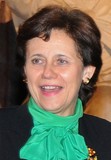
Area STEM: Chimica
Competenze: chimica, risonanza magnetica, scienze della vita
Parole chiave: biologia molecolare, biologia strutturale, disegno di vaccini, donne e scienza, ferro, infrastrutture di ricerca, metalli in sistemi biologici, metalloproteine, processi funzionali delle cellule, risonanza magnetica, trasporto rame nelle cellule
Regione: Toscana
Funzione/Ruolo
Direttrice del CERM (Centro Risonanze Magnetiche) e Professoressa di Chimica presso l'Università di Firenze
Percorso professionale
Dopo aver conseguito la laurea in Chimica presso l'Università degli studi di Firenze nel 1978, prosegue la sua formazione attraverso vari periodi di ricerca all'estero, principalmente negli USA. Prosegue la sua carriera accademica all'interno dell'Università di Firenze prima come ricercatrice e nel 1987 come professoressa associata. Dal 1999 è professoressa ordinaria di Chimica Generale e Inorganica e dal 2011 direttrice del CERM (Centro Risonanze Magnetiche) dell'Università di Firenze.
Risultati scientifici
Lucia Banci ha fornito e sta fornendo contributi originali e innovativi in Biologia strutturale e nella risonanza magnetica nucleare (NMR) applicata a sistemi biologici. In particolare ha acquisito visibiltà come leader internazionale per la caratterizzazione di processi funzionali in cellule viventi con risoluzione a livello atomico. Ha applicato e sta applicando questo approccio allo studio di processi responsabili del trasporto e utilizzo di ioni metallici, in particolare rame e ferro. Ha sviluppato un nuovo approaccio per "in cell NMR", cioè NMR ad alta risoluzione su cellule viventi, che permette di caratterizzare a livello atomico proteine umane in cellule umane viventi. Lucia Banci è impegnata nello sviluppo e nell'utilizzo della spettroscopia di risonanza magnetica nucleare (NMR) ad alta risoluzione, campo di ricerca nel quale ha fornito importanti progressi teorici e metodologici. È stata attiva in progetti di ricerca di genomica strutturale, nei quali utilizza un approccio "funzionale", cioè sfrutta la conoscenza della conformazione delle biomolecole per capirne la funzione e come questa possa essere alterata da mutazioni o altre alterazioni. Inoltre è stata pioniera nello sviluppo di un approccio assolutamente innovativo per il disegno razionale di vaccini altamente efficaci, cioè la vaccinology strutturale, basato sulla caratterizzazione strutturale degli antigeni e della loro interazione con gli anticorpi.
Attività editoriali e pubblicazioni
E' autrice di circa 400 articoli su riviste peer-reviewd con un totale di 21.000 citazioni, fra cui:
(2018) Luchinat E, Banci L. In-Cell NMR in Human Cells: Direct Protein Expression Allows Structural Studies of Protein Folding and Maturation. Acc Chem Res., 51, 1550-1557.
(2016) Nuttle X, Giannuzzi G, Duyzend MH, Schraiber JG, Narvaiza I, Camponeschi F, Ciofi-Baffoni S, Sudmant PH, Penn O, Chiatante G, Malig M, Huddleston J, Benner C, Stessman HAF, Marchetto MCN, Denman L, Harshman L, Baker C, Raja A, Penewit K, Tang WJ, Ventura M, Antonacci F, Akey JM, Amemiya CT, Banci L, Gage FH, Reymond A and Eichler EE. Emergence of a Homo sapiens-specific gene family and the evolution of autism risk at chromosome 16p11.2. Nature, 536:205-209.
(2015) Banci L, Ciofi-Baffoni S, Gajda K, Muzzioli R, Peruzzini R and Winkelmann J. N-terminal domains mediate [2Fe-2S] cluster transfer from glutaredoxin-3 to anamorsin. Nature Chemical Biology, 11:772-778.
(2011) Scarselli M, Aricò B, Brunelli B, Savino S, Di Marcello F, Palumbo E, Veggi D, Ciucchi L, Cartocci E, Bottomley M.J, Malito E, Lo Surdo P, Comanducci M, Giuliani M.M, Cantini F, Dragonetti S, Colaprico A, Doro F, Giannetti P, Pallaoro M, Brogioni B, Tontini M, Hilleringmann M, Nardi-Dei V, Banci L, Pizza M. & Rappuoli R, Rational design of a meningococcal antigen inducing broad protective immunity. Science Translational Medicine, 3:91ra62.
(2010) Banci L, Bertini I, Ciofi-Baffoni S, Kozyreva T, Zovo K & Palumaa P. Affinity gradients drive copper to cellular destinations. Nature, 465:645-648.
Riconoscimenti e premi
Lucia Banci attualmente dirige il CERM (Centro di Risonanze Magnetiche) di Firenze, centro di cui è anche co-fondatrice, una grande infrastruttura europea nel campo delle Scienze della Vita (Life Sciences). È membro di EMBO (Organizzazione Europea per la Biologia Molecolare) ed è la delegata italiana presso il Consiglio del Laboratorio Europeo di biologia molecolare (EMBL). Nel 2015 e' stata insignita del premio IUPAC "Donne Illustri in Chimica". Ha ricevuto il "Fiorino d'Oro della Città di Firenze" Medaglia d'oro del Comune di Firenze, ed altri premi e riconoscimenti.
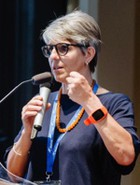
Funzione/Ruolo
Professoressa associata di Chimica al Politecnico di Torino dove è Referente per la task force Batteries@Polito
Percorso professionale
Dopo la laurea in Chimica presso l’Università di Torino e il Dottorato di Ricerca in Ingegneria Materiali presso il Politecnico di Milano, nel 1995 diventa Ricercatrice Universitaria in Fondamenti Chimici per la Tecnologia e poi nel 2015 Professoressa Associata nel medesimo SSD, presso il politecnico di Torino. Svolge la sua attività nel Dipartimento di Scienza Applicata e Tecnologia del Politecnico di Torino dove coordina un gruppo di ricerca costituito da 15 giovani tra ricercatori, assegnisti di ricerca e dottorandi.
L’attività didattica è prevalentemente svolta nell’ambito dei corsi di base di chimica. Inoltre svolge numerose attività didattiche nei master sull’elettrificazione e dal prossimo anno nel nuovo corso di sistemi elettrochimici di accumulo dell’energia.
Si occupa dell’avvio del nuovo Master Europeo sull’Energy Storage.
Leader delle attività di “education” nelle iniziative europee Battery2030+ (battery2030.eu) e nell’ETIP Batteries Europe.
Dal suo avvio nel 1995, è referente per i laboratori didattici di chimica e dal 2018 è referente per i corsi di chimica del Politecnico di Torino.
E’ anche responsabile dei laboratori sull’accumulo dell’energia presso il laboratorio interdipartimentale Energy Center Lab.
Risultati scientifici
La principale attività di ricerca di Silvia Bodoardo è nel gruppo di Elettrochimica del Politecnico di Torino.
Nel corso degli anni, la sua attività si è concentrata su varie linee di ricerca nel campo della chimica fisica e in particolare dell'elettrochimica studiando e progettando in particolare nuovi materiali per diversi tipi di generatori di energia elettrochimica.
I temi principali studiati sono le caratteristiche strutturali e le proprietà elettrochimiche del biossido di manganese come sostanza attiva nelle batterie alcaline, l'accumulatore piombo-acido, i materiali degli elettrodi per celle agli ioni di litio, i materiali ad alta capacità come l'anodo per celle agli ioni di litio, i materiali ad alto potenziale come il catodo per celle agli ioni di litio, gli elettrodi e i materiali elettrolitici per le celle al litio-zolfo, gli elettrodi e i materiali elettrolitici per celle ad aria al litio, la caratterizzazione di celle industriali per batterie agli ioni di litio, i sistemi ibridi elettrochimici: alta energia / alta potenza.
Ha partecipato a numerosi progetti finanziati dalla comunità Europea (coordinatrice del progetto STABLE) e anche a progetti nazionali e regionali. Attualmente è l’unica ricercatrice italiana che partecipa alla Large Research initiative Battery2030+ (battery2030.eu) nella quale si occupa di smart batteries. Inoltre è cochair nel WG3 su Advanced Materials nella piattaforma tecnologica ETIP BatteRIes Europe. Silvia ha organizzato numerose conferenze e seminari sui materiali con applicazione elettrochimica ed è stata chair woman al lancio del Premio Horizon sulle batterie innovative.
E’ inoltre valutatrice per la comunità europea dei progetti ERC e nell’area NMP e ICT, LCBAT. Valutatrice nazionale di progetti FIRB e PRIN, per Faraday e per il consiglio delle ricerche Norvegese.
Attività editoriali e pubblicazioni
[2019] Giai Pron, Vittorio; Versaci, Daniele; Amici, Julia; Francia, Carlotta; Santarelli, Massimo; Bodoardo, Silvia, Electrochemical Characterization and Solid Electrolyte Interface Modeling of LiNi0.5Mn1.5O4-Graphite Cells, Journal of Electrochem Soc. 166(10) 2255 doi: 10.1149/2.0941910jes
[2019] Zubair, Usman; Amici, Julia; Crespiera, Sandra Martinez; Francia, Carlotta; Bodoardo, Silvia, Rational design of porous carbon matrices to enable efficient lithiated silicon sulfur full cell, Carbon doi10.1016/j.carbon.2019.01.005
[2019] J. Amici, S. Romanin, M. Alidoost, D. Versaci, C. Francia,F .Smeacetto, S. Bodoardo, UV-cured methacrylate based polymer composite electrolyte for metallic lithium batteries, Journal of Electroanalytical Chemistry, 837 (2019) 103–107. DOI:10.1016/j.jelechem.2019.02.027
[2018] J. Amici, M. Alidoost, F. Caldera, D. Versaci, U. Zubair, F. Trotta, C. Francia, S. Bodoardo, PEEK-WC / nanosponge membranes for lithium anode protection in rechargeable Li-O2 batteries, ChemElectroChem 5, 1599–1605. DOI: 10.1002/celc.201800241R1
[2018] Bodoardo, S.; Zubair, Usman; Serrapede, M.; Amici, J.; Zaccagnini, P.; Versaci, D.; Francia, C.; Pirri, C.; Lamberti, A. Dispositivo elettrochimico a commutazione automatica per l’accumulo ad alta energia e ad alta potenza P2952PC00 - PCT/IB2019/053525
[2017] U. Zubair, A. Anceschi, F. Caldera, M. Alidoost, J. Amici, C. Francia, M. Zanetti, F. Trotta, S. Bodoardo, N. Penazzi. Dual confinement of sulphur with rGO wrapped microporous carbon from ß-cyclodextrin nanosponges as a cathode material for Li-S batteries, Journal of Solid State Electrochemistry, 21(12), 3411. DOI: 10.1007/s10008-017-3664-6
[2017] D. Versaci, R. Nasi, U. Zubair, J. Amici, M. Sgroi, M.A. Dumitrescu, C. Francia, S. Bodoardo, N. Penazzi, New ecofriendly low-cost binders for Li-ion anodes, Journal of Solid State Electrochemistry, 21(12), 3429-3435. DOI: 10.1007/s10008-017-3665-5
[2016]J. Amici, M. Alidoost, C. Francia, S. Bodoardo, S. Martinez Crespiera, D. Amantia, M. Biasizzo, F. Caldera, F. Trotta O2 selective membranes based on a dextrin-nanosponge (NS) in PVDF-HFP polymer matrix for Li-Air Cells, Chem. Commun., 52, 13683—13686. DOI: 10.1039/c6cc06954a
[2001] S. Bodoardo; N. Penazzi; P. Spinelli; M. Arrabito Influence of aluminium doping on the electrochemical behaviour of manganese dioxide J. Power Sources 94(2) 194 doi: 10.1016/S0378-7753(00)00586-3
[1998] Bodoardo S.; R.Chiappetta; B. Onida; F.Figueras; E.Garrone Ammonia interaction and reaction with Al-pillared montmorillonite: an IR study Microporous and Mesoporous Materials20,187
[1997] Fubini B; Mollo L; Bodoardo S.; Onida B; Oberson D; Lafuma C. Evaluation of the surface acidity of some phillosilicates in relation to their activity toward the enzyme human leucocyte elastase Langmuir 13 919
[1995] Bodoardo S. Maja M., Penazzi N. Processes involving gases in valve-regulated lead/acid batteries. J. Power Sources 55 (2) 183 doi:10.1016/0378-7753(95)02188-M
Riconoscimenti e premi
La professoressa Bodoardo ha ricevuto numerosi inviti da parte della Comunità europea per presentare i risultati della ricerca. Ad esempio, ha partecipato alla giornata di consultazione sui temi legati alle batterie promossa dal DG Connect (10 Gennaio 2018), e ha presentato le attività sul tema litio aria durante la giornata della FET (Bruxelles, 10 gennaio 2018) ed è stata relatrice del tavolo sulla mobilità. E’ dunque stata incaricata, con Marcel Meuss, Simon Perraud e Noshin Omar di riorganizzare le nuove roadmap sulle batterie.
E’ stata inviata dal MAE (Ministero Affari Esteri) in Bolivia per un corso sui sistemi al litio dal 16 al 22 maggio 2010.
E' stata invitata a presentare lavori scientifici presso numerosi convegni internazionali.
E’ membro attivo nel comitato scientifico della Fondazione Telios.

Area STEM: Chimica
Competenze: caratterizzazione dei materiali, carbonatazione, eco-materiali, economia circolare, materiali sostenibili, materie prime critiche, recupero, riciclo, stabilizzazione
Parole chiave: materiali, metalli pesanti, metalli strategici, sostenibilità, transizione energetica
Regione: Lombardia
Funzione/Ruolo
Professoressa ordinaria di Fondamenti Chimici delle Tecnologie all'Università di Brescia. Responsabile della linea di ricerca sugli eco-materiali presso il laboratorio di Chimica per le Tecnologie.
Percorso professionale
Dopo la Laurea in Ingegneria Ambientale presso l'Università di Brescia, prosegue gli studi presso lo stesso ateneo con un dottorato di ricerca in Materiali per l’Ingegneria, concentrandosi prevalentemente sulla caratterizzazione dei materiali e avanzate tecniche di caratterizzazione a raggi X. Durante il dottorato, lavora a Grenoble (Francia), presso il "Laboratoire de Crystallographie", nel gruppo del professor Raoux. Dal 2011 è professoressa ordinaria di Fondamenti Chimici delle Tecnologie presso l’università degli Studi di Brescia.
Risultati scientifici
Elza Bontempi è stata tra il 2017 e 2020 TOP WORLD RESEARCHER (dato SciVal) per la ricerca nell'ambito dell'incenerimento dei rifiuti, dei rifiuti solidi urbani e della carbonatazione.
Dal 2021 è nella lista del Top 2% World Scientists, prodotta dalla Stanford University. È stata responsabile di diversi progetti di ricerca nazionali ed internazionali, sviluppando nuove tecnologie e nuovi materiali sostenibili, provenienti da rifiuti e sotto-prodotti. La sua attività scientifica negli ultimi anni si è rivolta al recupero di materie prime critiche in ambito di economia circolare, come per esempio il litio e cobalto, da batterie esauste. È autrice di diversi brevetti in ambito di recupero di materiali ed ha vinto diversi premi. È inserita nella lista dei Top Italian Scientist (https://topitalianscientists.org/) in ambito di scienze naturali e ambientali.
Attività editoriali e pubblicazioni
Elza Bontempi è autrice di numerose pubblicazioni, fra cui:
[2023] Ducoli, S., Zacco, A., Valentim, B., Zanoletti, A., Ye, G., Mousa, E., Bontempi, E.
ESCAPE simplified approach designed to evaluate materials sustainability: The case of new adsorbent materials for activated carbon substitution, Sustainable Materials and Technologies, 38, art. no. e00709.
[2023] Fahimi, A., Alessandri, I., Cornelio, A., Frontera, P., Malara, A., Mousa, E., Ye, G., Valentim, B., Bontempi, E. A microwave-enhanced method able to substitute traditional pyrometallurgy for the future of metals supply from spent lithium-ion batteries, Resources, Conservation and Recycling, 194, art. no. 106989.
[2023]Sorrentino, G.P., Zanoletti, A., Ducoli, S., Zacco, A., Iora, P., Invernizzi, C.M., Di Marcoberardino, G., Depero, L.E., Bontempi, E. Accelerated and natural carbonation of a municipal solid waste incineration (MSWI) fly ash mixture: Basic strategies for higher carbon dioxide sequestration and reliable mass quantification, Environmental Research, 217, art. no. 114805.
[2022]Fiameni, L., Fahimi, A., Federici, S., Cornelio, A., Depero, L.E., Bontempi, E.
A new breakthrough in the P recovery from sewage sludge ash by thermochemical processes, Green Chemistry, 24 (18), pp. 6836-6839.
[2022] Fahimi, A., Ducoli, S., Federici, S., Ye, G., Mousa, E., Frontera, P., Bontempi, E.
Evaluation of the sustainability of technologies to recycle spent lithium-ion batteries, based on embodied energy and carbon footprint, Journal of Cleaner Production, 338, art. no. 130493.
[2022] Bontempi, E. A global assessment of COVID-19 diffusion based on a single indicator: Some considerations about air pollution and COVID-19 spread, Environmental Research, 204, art. no. 112098.
[2021] Zanoletti, A., Cornelio, A., Bontempi, E. A post-pandemic sustainable scenario: What actions can be pursued to increase the raw materials availability?, Environmental Research, 202, art. no. 111681.
[2021] Fahimi, A., Federici, S., Depero, L.E., Valentim, B., Vassura, I., Ceruti, F., Cutaia, L., Bontempi, E. Evaluation of the sustainability of technologies to recover phosphorus from sewage sludge ash based on embodied energy and CO2 footprint, Journal of Cleaner Production, 289, art. no. 125762.
[2020] Assi, A., Bilo, F., Federici, S., Zacco, A., Depero, L.E., Bontempi, E.
Bottom ash derived from municipal solid waste and sewage sludge co-incineration: First results about characterization and reuse, Waste Management, 116, pp. 147-156.
[2020] Assi, A., Bilo, F., Zanoletti, A., Ponti, J., Valsesia, A., La Spina, R., Zacco, A., Bontempi, E.Zero-waste approach in municipal solid waste incineration: Reuse of bottom ash to stabilize fly ash, Journal of Cleaner Production, 245, art. no. 118779.
[2018] Bilo, F., Pandini, S., Sartore, L., Depero, L.E., Gargiulo, G., Bonassi, A., Federici, S., Bontempi, E. A sustainable bioplastic obtained from rice straw, Journal of Cleaner Production, 200, pp. 357-368.
[2017] Bontempi, E. A new approach for evaluating the sustainability of raw materials substitution based on embodied energy and the CO2 footprint, Journal of Cleaner Production, 162, pp. 162-169.
La lista completa è disponibile sul sito OPENBS Iiris dell'Università di Brescia.
Riconoscimenti e premi
Vincitrice del premio europeo: EIT Raw Materials Business Ideas Competition, in collaborazione con Velaworks (dicembre 2016).
Vincitrice del premio nazionale nell’ambito della tematica “Tecnologie abilitanti e soluzione innovative per la città sostenibile” assegnato da Associazione Italiana per la Ricerca Industriale (AIRI) nel maggio 2018.
Vincitrice del premio nazionale Gaetano Marzotto (novembre 2018)
Vincitrice del premio nazionale ITWIIN (ITalian Women Innovators and Inventors Network) come innovatrice (novembre 2018)
Vincitrice del premio nazionale “Innovation Village Award” istituito da Innovation Village e da ASviS – Alleanza Italiana per lo Sviluppo Sostenibile (aprile 2019).
Vincitrice del ENERGY GLOBE AWARD nazionale (luglio 2020).
Vincitrice del premio “European Business Idea Competition on raw materials” from European Institute of Innovation & Technology (EIT) Raw Materials, per una nuova tecnologia di recupero di materie prima da rifiuti (febbraio 2022).
Vincitrice del premio 2031 (ex Gaetano Marzotto) (novembre 2023).
Vincitrice dell’Intellectual Property Award nell’ambito Climatech (premio per l'imprenditoria femminile) per il brevetto innovativo “Metodo di recupero di materiali da rifiuti o scarti tramite processo carbotermico migliorato” (novembre 2024).
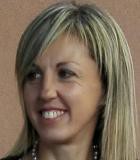
Funzione/Ruolo
Professoressa associata di Chimica all'Università degli Studi di Milano
Percorso professionale
Dopo aver conseguito la laurea in Chimica presso l'Università degli Studi di Milano nel 1993, prosegue la sua formazione con un dottorato di ricerca in Scienze Chimiche conseguito nel 1997. Dal 1999 al 2012 è ricercatrice in Chimica Analitica presso l'Università di Milano nella facoltà di Scienze Matematiche, Fisiche e Naturali. Dal 2012 al 2014 svolge la sua attività di ricerca al Dipartimento di Chimica della stessa università. Dal 2015 è professoressa associata di Chimica Analitica. È docente di Chimica Analitica e Chimica dell'Ambiente presso i corsi di Laurea in Chimica e Chimica Industriale dell'Università degli Studi di Milano. Dal 2008 è componente del collegio dei docenti del Dottorato in Chimica.
Risultati scientifici
Le tematiche di ricerca di Paola Fermo riguardano lo studio e la caratterizzazione di matrici ambientali e in particolare l'aerosol atmosferico (particelle di dimensioni micrometriche in sospensione nell'atmosfera) e gli inquinanti in stato gassoso, sia esternamente, sia in ambienti interni. Il principale obbiettivo della ricerca è la quantificazione dei costituenti delle frazioni a diversa granulometria (PM10, PM2.5, ecc.) del particolato atmosferico (PM) per determinare le sorgenti responsabili delle emissioni. A tale proposito è stato sviluppato un metodo analitico per la quantificazione del levoglucoasano, marker univoco della combustione della legna, un'importante sorgente di particolato atmosferico non solo in ambiente rurale ma anche in ambiente urbano. Le specie analizzate all'interno del PM includono i principali costituenti inorganici e organici. Inoltre vengono quantificate sostanze di interesse dal punto di vista tossicologico (IPA, idrocarburi policiclici aromatici) che mostrano effetti negativi sulla salute umana e sono ritenute cancerogene. In ambiente urbano viene anche studiato il degrado indotto dall'inquinamento atmosferico su superfici lapidee di interesse per i beni culturali. All'interno delle tematiche ambientali rientra lo studio dei contaminanti presenti nelle acque (potabili e reflue). Un ulteriore filone di ricerca è inerente allo studio di manufatti di interesse storico artistico (ceramiche, malte, stucchi, dipinti, ecc.).
Attività editoriali e pubblicazioni
Paola Fermo fa parte dell'editorial board delle riviste: Mediterranean Journal of Chemistry, Annals of Chromatography and Separation Techniques, American Journal of Analytical Chemistry, Journal of Analytical & Bioanalytical Techniques. Svolge inoltre l'attività di reviewer per numerose riviste internazionali.
È autrice di circa 12 capitoli di libri, numerosi atti di convegni e circa 100 pubblicazioni su riviste internazionali, fra cui:
(2019) Ielpo, P., Mangia, C., Marra, G.P., Comite, V., Rizza, U., Uricchio, V.F., Fermo, P. Outdoor spatial distribution and indoor levels of NO2 and SO2 in a high environmental risk site of the South Italy, Science of the Total Environment, 648:787-797.
(2018) Fermo P., Goidanich S., Comite V., Toniolo L., Gulotta D., Study and characterization of environmental deposition on marble and surrogate substrates at a monumental heritage site; Geosciences; in press
(2018) Amadori M.L., Raspugli V., Comite V., Fermo P., Mini F.M., La Russa M., Maekawa Y., Integrated Scientific Investigations On Constitutive Materials From Me-taw-ya Temple, Pagán Valley, Burma (Myanmar), Measurement, ISSN 0263-2241, https://doi.org/10.1016/j.measurement.2018.09.004.
(2018) Amadori, M.L., Pallante, P., Fermo, P., Emami, M.A., Chaverdi, A.A., Callieri, P., Matin, E., Advances in Achaemenid brick manufacturing technology: Evidence from the monumental gate at Tol-e Ajori (Fars, Iran) Applied Clay Science, 152: 131-142.
(2018) Vecchi, R., Bernardoni, V., Valentini, S., Piazzalunga, A., Fermo, P., Valli, G., Assessment of light extinction at a European polluted urban area during wintertime: Impact of PM1 composition and sources, Environmental Pollution, 233: 679-689.
(2018) Daellenbach, K.R., El-Haddad, I., Karvonen, L., Vlachou, A., Corbin, J.C., Slowik, J.G., Heringa, M.F., Bruns, E.A., Luedin, S.M., Jaffrezo, J.-L., Szidat, S., Piazzalunga, A., Gonzalez, R., Fermo, P., Pflueger, V., Vogel, G., Baltensperger, U., Prévôt, A.S.H., Insights into organic-Aerosol sources via a novel laser-desorption/ionization mass spectrometry technique applied to one year of PM10 samples from nine sites in central Europe Atmospheric Chemistry and Physics, 18 (3): 2155-2174.
(2017) Corsini E, Ozgen S, Papale A, Galbiati V, Lonati G, Fermo P, Corbella L, Valli G, Bernardoni V, Dell'Acqua M, Becagli S, Caruso D, Vecchi R, Galli CL, Marinovich M. Insights on wood combustion generated proinflammatory ultrafine particles (UFP). Toxicology Letters, 266, 74-84.
(2016) Daellenbach KR, Bozzetti C, Křepelová A, Canonaco F, Wolf R, Zotter P, Fermo P, Crippa M, Slowik JG, Sosedova Y, Zhang Y, Huang R, Poulain L, Szidat S, Baltensperger U, El Haddad I, Prévôt ASH. Characterization and source apportionment of organic aerosol using offline aerosol mass spectrometry. Atmospheric Measurement Techniques, 9, 23-39.
(2016) Cattaneo A, Fermo P, Urso P, Perrone MG, Piazzalunga A, TarlassiJ, Carrer P, Cavallo DM. Particulate-bound polycyclic aromatic hydrocarbon sources and determinants in residential homes. Environmental Pollution, 218, 16-25.
(2016) Ielpo P, Fermo P, Comite V, Mastroianni D, Viviano G, Salerno F, Tartari G. Chemical characterization of biomass fuel particulate deposits and ashes in households of Mt. Everest region (NEPAL). Science of The Total Environment, 573, 751-759.
(2016) Amadori ML, Del Vais C, Fermo P, Pallante P. Archaeometric researches on the provenance of Mediterranean Archaic Phoenician and Punic pottery. Environmental Science and Pollution Research International, 1-29.
(2016) Fasani D, Fermo P, Barroso PJ, Martín J, Santos JL, Aparicio I, E. Alonso E. Analytical Method for Biomonitoring of PAH Using Leaves of Bitter Orange Trees (Citrus aurantium): a Case Study in South Spain. Water Air and Soil Pollution, 227, 360.
Riconoscimenti e premi
Paola Fermo è componente del Comitato scientifico della Società Italiana di Medicina Ambientale (SIMA) e fa parte della Società Chimica Italiana (Divisione di Chimica Analitica e Divisione di Chimica dell'Ambiente e dei Beni Culturali), della Società Italiana di Archeometria (AIAR) e del consorzio INSTM (Consorzio Internazionale per la Scienza e la Tecnologia dei Materiali).

Funzione/Ruolo
IMPROVEMENT & SAVING Project Leader. EU Lead Auditor Conformity Assessment CE marking
Percorso professionale
Dopo aver conseguito la laurea magistrale in Chimica presso l’Università di Firenze (1999) e una borsa di studio presso il Consorzio Interuniversitario per la ricerca sulle Metallo-Proteine dell’Università di Firenze, matura esperienze professionali in vari ambiti distinguendosi per lo studio e l’ottimizzazione di processi aziendali e metodi analitici in ambito farmaceutico e ambientale.
Dal 2000 al 2017 è Consulente Tecnica di Ufficio del Tribunale di Firenze.
Dal 2003 a maggio 2008, lavora presso ALPHA ECOLOGIA Srl facendo conseguire all’azienda l’accreditamento ACCREDIA, ottimizzando i processi aziendali e le attività del laboratorio chimico.
Nel 2006 consegue in CSQA la certificazione di Auditor Interno (ISO19011) per i Sistemi di Gestione per la Qualità.
Da maggio 2008 a febbraio 2016 lavora presso Biochemielab Srl, ricoprendo dapprima il ruolo di Responsabile di Laboratorio implementando il Quality Management System con l’approccio per processi, il sistema QA/QC EPA Standard Quality System, incrementando l’accreditamento ACCREDIA ISO17025, digitalizzazione delle attività di laboratorio; successivamente ricopre il ruolo di Quality Assurance Manager occupandosi del sistema integrato qualità-ambiente-sicurezza, certificazioni ISO9001, ISO14001, accreditamento ACCREDIA ISO17025, ottimizzazione dei processi aziendali.
Dal 2016 al 2022 ricopre il ruolo di Quality Assurance Manager in SAGEA Centro di Saggio Srl, International Contract Research Organisation nel settore agroalimentare, occupandosi di certificazioni GLP e GEP come auditor interno. Ha implementato nell’azienda il Quality Management System ISO9001, l’approccio per processi del modello giapponese Total Quality.
Nel 2022 diventa IMPROVEMENT & SAVING Project Leader, a capo di alcuni progetti di standardizzazione per i laboratori europei, progetti commissionati dalla Commissione Europea DG-GROW con il CEN di Bruxelles, e EU Lead Auditor presso un organismo di notifica/certificazione olandese EFCI Register (NB2832) autorizzato dalla Commissione Europea per la valutazione di conformità e marcatura CE di prodotti per il mercato europeo.
Dal 2016 è Presidente nazionale del Settore Alimentare di AICQ (Associazione Italiana Cultura Qualità) per la diffusione della qualità nel settore agroalimentare e vice-presidente del Comitato Laboratori di prova e di taratura di AICQ per la diffusione della qualità nei laboratori di prova.
Dal 2019 è Green Belt Six Sigma ed è consulente internazionale in ambito TQM e Lean Six Sigma presso COMATCH GmbH con sede a Berlino.
Risultati scientifici
Dal 2000 è esperta di implementazione nelle aziende del modello giapponese del Total Quality Management (Toyota Way), del miglioramento continuo Kaizen, di analisi di processi aziendali e progetti Lean Six Sigma,di implementazione aziendale di MonozukuriWG.
Ha partecipato a numerosi consegni come relatrice e maturato ampie esperienze di formazione.
In particolare, dal 2016 a oggi l’attività in AICQ le ha permesso di organizzare Corsi di formazione e Convegni nazionali con Istituto Superiore di Sanità, ACCREDIA, AICQ-SICEV.
Dal 2018 è membro UNI/CT 003 "Commissione Agroalimentare” con diritto di voto, membro UNI/CT003/GL21 "Biostimolanti delle piante" con diritto di voto, membro UNI/CT406 “Fertilizzanti” con diritto di voto, membro UNI/CT003/GL23 “Autenticità degli alimenti” con diritto di voto.
Dal 2019 è una tra i responsabili del Progetto di Formazione Europea ENVIRECA-ERASMUS+ Commissione Europea, AICQ, DU, FLA, HRC, CSM e EXELIA “Cooperation for innovation and the exchange of good practices, Strategic Partnerships for vocational education and training” per il settore HORECA.
Attività editoriali e pubblicazioni
[2017] Gallerini S., Le GLP/BPL, il Kaizen e il Monozukuri, Magazine Qualità AICQ gen-feb
[2016] Gallerini S., Le GLP/BPL, il Kaizen e il Monozukuri, AICQ QualitàOnLine, novembre
[2007] Gallerini S., Salvini A., Frediani P., Homogeneous hydrogenation of ketones in the presence of H2Ru(CO)2(PPh3)2, Dalton Transaction, Issue 39
[2001], Gallerini S., Total Quality Management nel passaggio generazionale delle imprese toscane, ASFOR Toscana
[2000] Gallerini S., Salvini A., Frediani P., Homogeneous hydrogenation of ketones in the presence of H2Ru(CO)2(PPh3)2, Applied Organometallic Chemistry, 14: 570-580
[1999] Gallerini S., Salvini A., Frediani P., Homogeneous hydrogenation, XIII FECHEM International Conference on Organometallic Chemistry Book of Abstract, Lisbon
Riconoscimenti e premi
Nel 2016 riceve il Sagea Innovation Award, premio per l’implementazione del Total Quality Management finalizzato alla ricerca del miglioramento continuo Kaizen
Nel 2017 riceve il Premio Comitati e Settori AICQ, come presidente del Settore Alimentare per aver partecipato attivamente alla diffusione della Cultura della Qualità in Italia, per eventi formativi nazionali organizzati con successo di platea e di contenuti sia per articoli pubblicati sulle riviste Magazine Qualità e Qualità On Line.
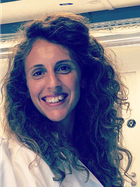
Funzione/Ruolo
Professoressa ordinaria di Chimica Fisica presso l’Università di Pavia e Direttrice del gruppo di ricerca PVsquared2 presso il Dipartimento di Chimica dell'Università di Pavia
Percorso professionale
Nel 2008, consegue la Laurea in Ingegneria Fisica presso il Politecnico di Milano e, nel 2012, il Dottorato di Ricerca in Fisica, presso la stessa università, sviluppando nuove tecniche di spettroscopia ottica risolta in spazio e tempo per l’indagine dei processi chimico-fisici ultrarapidi in materiali semiconduttori organici. Completa il dottorato con sei mesi presso l’Università di Oxford come visiting PhD. Dal 2012 al 2015 continua la formazione in Italia con un post dottorato presso l’Istituto Italiano di Tecnologia – centro di Milano (CNST@IIT). Successivamente, diventa scientist presso l’École Polytechnique Federale De Lausanne (EPFL), Svizzera, dove rimarrà per 4 anni con borsa Marie Skłodowska-Curie prima, per poi diventare team leader di un progetto Ambizione Energy. Nel 2019 diventa Professoressa associata presso l’Università di Pavia e dirige il progetto di ricerca ERC HYNANO, volto allo sviluppo di nano-materiali avanzati per celle solari di nuova generazione. Dal 2025 è professoressa ordinaria nello stesso ateneo.
Risultati scientifici
L’interesse di ricerca di Giulia Grancini è volto allo studio dei processi fondamentali che regolano l’interazione luce-materia in materiali semiconduttori avanzati utilizzati in dispositivi optoelettronici, con particolare attenzione ai dispositivi fotovoltaici. In questo campo, ha contribuito con studi innovativi, rivelando i processi fisico-chimici alla base della generazione di fotocorrente che avvengono su scale temporali ultrabrevi. Dalla conoscenza di tali processi fondamentali, l’interesse di Giulia Grancini si è poi rivolto alla realizzazione stessa di dispositivi fotovoltaici di nuova generazione utilizzando polimeri semiconduttori e materiali organici. Con il progetto ERC “HYNANO”, mira a una svolta nel solare, sviluppando materiali semiconduttori nano-strutturati rivoluzionari a base di perovskite ibrida, quali elementi foto-attivi per un solare efficiente, moderno, flessibile, a basso costo e a basso impatto ambientale.
Attività editoriali e pubblicazioni
E’ autrice di oltre 90 pubblicazioni (h index= 44, con oltre 14000 citazioni), tra cui:
[2020] Sutanto A, Szostak R, Drigo N, Queloz V, Marchezi P, Germino J, Tolentino H, Nazeeruddin M, Nogueira A, Grancini G* In Situ Analysis Reveals the Role of 2D Perovskite in Preventing Thermal-Induced Degradation in 2D/3D Perovskite Interfaces Nano Lett. 20, 5, 3992-3998.
[2020] Queloz V. et al. Spatial Charge Separation as the Origin of Anomalous Stark Effect in Fluorous 2D Hybrid Perovskites Adv. Funct. Mater. https://doi.org/10.1002/adfm.202000228
[2019] Grancini G*, Nazeeruddin M Dimensional tailoring of hybrid perovskites for photovoltaics Nature Rev. Materials, 4, 4-22.
[2018] Pantaler M, Cho K, Queloz V, García Benito I., Fettkenhauer C, Anusca I, Nazeeruddin M, Lupascu D, Grancini G* Hysteresis-Free Lead-Free Double-Perovskite Solar Cells by Interface Engineering ACS Energy Lett. 3, 1781-1786.
[2017] Grancini G. et al. One-Year stable perovskite solar cells by 2D/3D interface engineering. Nature Comm., 8(1) 1-8, 15684.
[2017] A. D. Jodlowski, C. Roldán-Carmona, G. Grancini, et al. Large guanidinium cation mixed with methylammonium in lead iodide perovskites for 19% efficient solar cells Nature Energy 2, 972.
[2016] Gratia, P., Grancini G.* et al. Intrinsic Halide Segregation at Nanometer Scale Determines the High-Efficiency of mixed cation/mixed halide Perovskite Solar Cells J. Am. Chem. Soc. 138 (49), 15821.
[2015] Grancini G. et al. Role of microstructure in the electron-hole interaction of hybrid lead halide perovskitesNature Photonics 9, 695-701.
[2014] D’Innocenzo V., Grancini G. et al. Excitons versus Free Charges: a Photophysical Picture of Organo-lead Tri- Halide Perovskites Nat. Commun. 5, 3586.
[2013] Grancini G. et al. Hot exciton dissociation in polymer solar cells Nature Mater. 12, 29.
[2013] Stranks S. D., Eperon G. E., Grancini G. et al. Electron-Hole Diffusion Lengths Exceeding 1 Micron in an Organometal Trihalide Perovskite Absorber Science 342 (6156), 341.
[2012] G. Grancini, et al. Boosting Infrared Light Harvesting by Molecular Functionalization of Metal Oxide/Polymer Interfaces in Efficient Hybrid Solar Cells Adv. Funct. Mater. 22, 2160.
Riconoscimenti e premi
Nel 2015 ha ricevuto il prestigioso National Award per la Fisica 2015 di EDISON, “in memoria di Francesco Somaini”.
Nel 2017 è stata insignita del premio IUPAP Young Scientist Prize in Optics dall’ International Commission of Optics per “deep knowledge on photophysical properties and ultrafast light-induced dynamical processes”.
Nel 2018 ha ricevuto il premio per giovani scienziati in Fisica “Swiss Physical Society Award” dalla Swiss Physical Society.
Nel 2018, ha ricevuto il grant Europeo ERC Starting Grant HYNANO (1.5 M€) per lo sviluppo di “HYbrid NANOstructured multi-functional interfaces for stable, efficient and eco-friendly photovoltaic devices”.
Nel 2019 è stata nominata USERN Laureate in Physical Science. Inoltre, da gennaio 2020, è stata nominata Italian Ambassador for USERN.
Nel 2019 appare tra gli “Highly Cited Researchers” (ranking in the top 1% by citations for field and year), Web of Science
Dal 2020 è parte del gruppo di scienziati “Gruppo 2003” e appare nella lista dei Top Italian Scientist.
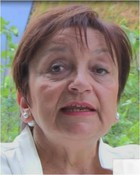
Area STEM: Chimica
Competenze: chimica verde, utilizzo materie prime rinnovabili per produzione nuovi combustibili, bioprodotti e biomateriali, valorizzazione scarti agro-industriali
Parole chiave: antiossidanti, bioeconomia, biolubrificanti, biomateriali, biotensioattivi, economia circolare, oli vegetali
Regione: Lombardia
Funzione/Ruolo
Dirigente di ricerca CNR (Consiglio Nazionale delle Ricerche).
Percorso professionale
Dopo la laurea in Chimica presso l’Università di Milano svolge attività di ricerca presso l’Università di Bari dove consegue il Dottorato di Ricerca nel 1988 ed avvia la sua carriera come ricercatrice CNR. Nel 1996 si trasferisce a Milano, dove nel 2020 diventa Dirigente di ricerca presso l'Istituto di Scienze e Tecnologie Chimiche 'Giulio Natta' (SCITEC).
Risultati scientifici
Gran parte della sua attività scientifica è stata dedicata all’utilizzo della catalisi eterogenea in processi di sintesi organica (idrogenazione catalitica selettiva nella sintesi di fine chemicals e di specialità, deidrogenazione catalitica selettiva, epossidazione catalitica eterogenea) e trasformazioni catalitiche selettive di materie prime da fonte rinnovabile (oli vegetali, terpeni, zuccheri, cellulosa, valorizzazione scarti agro-industria, economia circolare).
E’ stata responsabile di diversi contratti di ricerca con industrie italiane e straniere. Ha coordinato progetti di interesse per lo svilupo dell’economia circolare quali VeLiCA, da antiche colture materiali e prodotti per il futuro (Regione Lombardia, 2011-2013); RiceRes From waste to resource: an integrated valorization of the rice productive chain residues (Fondazione Cariplo, 2015-2017); Circo: Multi valorization of silverskin, a residue of the coffee roasting industry (Fondazione Cariplo e InnovHub, 2018-2021).
Attività editoriali e pubblicazioni
[2021] Cavuoto D, Ravasio N, Scotti N, Gervasini A, Campisi S, Marelli M, Cappelletti G, Zaccheria F. A green solvent diverts the hydrogenation of γ–valerolactone to 1,4 pentandiol over Cu/SiO2. Molecular Catalysis, 516: 111936
[2021] Overturf E, Pezzutto S, Boschiero M, Ravasio N, Monegato A. The CirCo (Circular Coffee) Project: A Case Study on Valorization of Coffee Silverskin in the Context of Circular Economy in Italy. Sustainability, 13: 9069
[2021] Bellini M, Zaccheria F, Bianchi S, Ravasio N. Vegetable oils as Triple Bottom Line compliant lubricants. Tribology International, 161: 107103
[2021] Nasti R, Galeazzi A, Marzorati S, Zaccheria F, Ravasio N, Bozzano G.L., Manenti F, Verotta L. Valorisation of Coffee Roasting By‑Products: Recovery of Silverskin Fat By Supercritical CO2 Extraction. Waste and Biomass Valorization, https://doi.org/10.1007/s12649-021-01435-9
[2020] Cavuoto D, Zaccheria F, Ravasio N. Some Critical Insights into the Synthesis and Applications of Hydrophobic Solid Catalysts. Catalysts 10: 1337
[2020] Zaccheria F, Bossola F, Scotti N, Evangelisti C, Dalsanto V, Ravasio N. On demand production of ethers or alcohols from furfural and HMF by selecting the composition of a Zr/Si catalyst. Catalysis Science and Technology, 10: 7502–7511
[2020] Pappalardo V.M, Cavuoto D, Sangiorgio S, Speranza G, Cappelletti G, Ravasio N, Zaccheria F. Clays as Effective Solid Acid Catalysts for the Preparation of Sugar Esters with Surfactant Properties. ChemistrySelect 5: 8009–8014
[2020] Overturf E, Ravasio N, Zaccheria F, Tonin C, Patrucco A, Bertini F, Canetti M, Avramidou K, Speranza G, Bavaro T, Ubiali D. Towards a more sustainable circular bioeconomy. Innovative approaches to rice residue valorization: The RiceRes case study. Bioresource Technology Reports, 11: 100427
[2020] Cavuoto D, Zaccheria F, Marelli M, Evangelisti C, Piccolo O, Ravasio N. The Role of Support Hydrophobicity in the Selective Hydrogenation of Enones and Unsaturated Sulfones over Cu/SiO2 Catalysts. Catalysts 10: 515
[2020] Scotti N, Bossola F, Zaccheria F, Ravasio N. Copper-zirconia catalysts: Powerful multifunctional catalytic tools to approach sustainable processes. Catalysts 10: 168
[2020] Scotti N, Ravasio N, Zaccheria F, Irimescu A, Merola S.S. Green pathway to a new fuel extender: continuous flow catalytic synthesis of butanol/butyl butyrate mixtures. RSC Advances, 10: 3130 – 3136
[2017] Zaccheria F, Mariani M, Scotti N, Psaro R, Ravasio N. Catalytic upgrading of lactose: a rest raw material of the dairy industry. Green Chemistry 19: 1904 - 1910
Riconoscimenti e premi
Nel 2021 è insignita della Medaglia Piero Pino “Per contributi di rilievo scientifico, innovativo e applicativo, nel settore della catalisi eterogenea con particolare attenzione alla sostituzione dei metalli nobili, nella sintesi in chimica fine e alle trasformazioni selettive di materie prime rinnovabili” dalla Divisione di Chimica industriale della Società Chimica Italiana.

Area STEM: Chimica
Competenze: alternative alle sperimentazioni animali, autorizzazioni alimentari, componenti cosmetici, cromatografia, dossier sostanze chimiche, validazione nuovi metodi
Parole chiave: cosmetici, mangimi, metodi tossicologici ufficiali, regolamento reach, sperimentazioni animali, test in vitro, test su animali
Regione: Lombardia
Funzione/Ruolo
Scientific Officer presso CAAT-Europe (Università di Konstanz in Germania, Project Manager presso REACH Mastery)
Percorso professionale
Dopo la laurea in Chimica a indirizzo bio-organico all'Università degli Studi di Milano nel 1989, trascorre 10 mesi in Germania come chemist trainee presso la Hewlett Packard (ora Agilent Technology). Da giugno dello stesso anno è Applicant specialist in Cromatografia (tecnica che permette il riconoscimento quantitativo e qualitativo dei diversi componenti presenti in una miscela). Ricopre nell'arco di 15 anni vari ruoli organizzativi e dirigenziali in aziende e istituzioni internazionali, per arrivare nel 2005 a un incarico triennale all'ECVAM (Centro per le convalide dei metodi alternativi della Commissione Europea) dove partecipa a due gruppi di lavoro: sviluppo del RIP 3.3 (REACH Implementation Project, Technical Guidelines to Industries) e, come coordinatrice, al progetto europeo sullo sviluppo di metodi integrati e alternativi ai test sugli animali. Dal 2009 è Scientific Officer per il progetto di collaborazione con CAAT - Europe (Centro per le Alternative ai test sugli Animali) presso l'Università di Konstanz in Germania e lavora in stretta collaborazione con CAAT presso la John Hopkins University di Baltimora (USA). Da 7 anni Maria Costanza Rovida è anche Project Manager Presso REACH Mastery, società di consulenza per gli adempimenti del regolamento Reach, adottato dalla Ue per migliorare la protezione della salute dell'uomo e dell'ambiente dai rischi delle sostanze chimiche.
Risultati scientifici
Maria Costanza Rovida è da anni impegnata nell'individuare strategie che possano ridurre o evitare l'utilizzo di animali vertebrati nei test di laboratorio. Come Project Manager REACH Mastery e in quanto esperta nella costruzione di testing strategies, si occupa anche di compilare e registrare dossier per valutare le sostanze chimiche, per le autorizzazioni in ambito alimentare o a uso zootecnico, e per definire linee guida per gli ingredienti dei cosmetici, in conformità a regolamenti UE o extra UE. Maria Costanza Rovida è anche docente presso l'Associazione Ambiente & Lavoro relativamente agli aspetti della sicurezza previsti dai regolamenti REACH e CLP (che garantiscono che i rischi presentati dalle sostanze chimiche siano chiaramente comunicati ai lavoratori e ai consumatori nell'Unione europea attraverso la classificazione e l'etichettatura delle sostanze chimiche). Il suo impegno costante resta quello di organizzare incontri e divulgare attraverso numerosi articoli scientifici lo sviluppo e la promozione di test tossicologici scientificamente avanzati che non prevedano l'utilizzo di animali in laboratorio, e di diffondere la cultura della sicurezza attenendosi alle linee guida della farmacopea europea, della ICH (International Conference on Harmonisation), della FDA (Food and Drug Administration) e del Centro per le convalide dei metodi alternativi della Commissione Europea.
Attività editoriali e pubblicazioni
È autrice di numerose pubblicazioni scientifiche internazionali, fra cui:
(2015) Rovida C, Asakura S, Daneshian M, Hofman-Huether H, Leist M, Meunier L, Reif D, Rossi A, Schmutz M, Valentin JP, Zurlo J, Hartung T. Toxicity testing in the 21st century beyond environmental chemicals. ALTEX Alternatives to Animal Experimentation, 32(3):171-81.
(2015) Rovida C, Alépée N, Api AM, Basketter DA, Bois FY, Caloni F, Corsini E, Daneshian M, Eskes C, Ezendam J, Fuchs H, Hayden P, Hegele-Hartung C, Hoffmann S, Hubesch B, Jacobs MN, Jaworska J, Kleensang A, Kleinstreuer N, Lalko J, Landsiedel R, Lebreux F, Luechtefeld T, Locatelli M, Mehling A, Natsch A, Pitchford JW, Prater D, Prieto P, Schepky A, Schuurmann G, Smirnova L, Toole C, van Vliet E, Weisensee D, Hartung T. Integrated Testing Strategies (ITS) for safety assessment. ALTEX Alternatives to Animal Experimentation, 32(1): 25-40.
(2014) Rovida C, Vivier M, Garthoff B, Hescheler J. ESNATS Conference — The Use of Human Embryonic Stem Cells for Novel Toxicity Testing Approaches. ATLA Alternatives to Laboratory Animals, 42, 97-113.
(2014) Knight J, Rovida, C. Safety Evaluations under the Proposed US Safe Cosmetics and Personal Care Products Act of 2013: Animal Use and Cost Estimates. ALTEX Alternatives to Animal Experimentation, 31(2):177-208.
(2013) Rovida C, De Angelis I, Lorenzetti S. Alternative in vitro methods to characterize the role of Endocrine Active Substances (EASs) in hormone-targeted tissues. ALTEX Alternatives to Animal Experimentation, 30(2):253-5.
(2013) Rovida C, Martin SF, Vivier M, Weltzien HU, Roggen E. Advanced tests for skin and respiratory sensitization assessment. Summary Report on the Sens-it-iv End Congress in Brussels, November 23-25, 2011. ALTEX Alternatives to Animal Experimentation, 30(2), 231-252.
(2011) Rovida C, Longo F, Rabbit RR. How are Reproductive Toxicity and Developmental Toxicity Addressed in REACH Dossiers? ALTEX Alternatives to Animal Experimentation, 28(3), 111-132.
(2011) Rovida C. Local Lymph Node Assay: How testing laboratories apply OECD TG 429 for REACH purposes. ALTEX Alternatives to Animal Experimentation, 28(2), 117-129.
(2010) Rovida C. Food for Thought... Why No New In Vitro Tests Will Be Done for REACH by Registrants. ALTEX, Alternatives to Animal Experimentation, 27(3), 175-183.
(2009) Hartung T, Rovida C. Opinion. Chemical regulators have overreached. Nature, 460, 1080-1.
Riconoscimenti e premi
Maria Costanza Rovida è Consigliera presso l'Ordine interprovinciale dei chimici della Lombardia e Accredited Stakeholder presso l'Agenzia Europea per le Sostanze Chimiche (ECHA). Fa parte del Gruppo di esperti per il Centro di Referenza Nazionale per i Metodi Alternativi, Benessere e Cura degli Animali da Laboratorio (Istituto Zooprofilattico di Brescia), di ESTAF (ECVAM Stakeholder Forum), IPAM (Italian Platform for Alternative Methods) e del board di ECOPA (Eropean Platform for Alternative Methods). Fa parte inoltre di diverse società scientifiche, fra cui la EUSAAT (European Society for Alternatives to Animal Testing), la ESTIV (European Society of in vitro testing) e l'AFI (Associazione Farmaceutici e Industria). È nell'elenco dei consulenti STOA (European Parliament Science and Technology Options Assessment).

Funzione/Ruolo
Professoressa ordinaria di Chimica presso l'Università di Bari e accademica dei Lincei.
Percorso professionale
Luisa Torsi, accademica dei Lincei, ha conseguito la laurea in Fisica (1989) ed il dottorato di ricerca in Chimica (1993) presso l’Università di Bari. Ha svolto attività di ricerca come post-doc presso i Bell Laboratories della AT&T/Lucent Technologies negli Stati Uniti dal 1994 al 1996. È professoressa ordinaria di Chimica Analitica (CHIM/01) presso il Dipartimento di Chimica dell'Università degli Studi Bari Aldo Moro dall’età di 40 anni. È stata adjunct professor presso l’Åbo Akademi University in Finlandia dal 2017 al 2022. È attualmente Vicepresidente del Consiglio Scientifico del CNR e presidente dell’ARTI, l’Agenzia di regione Puglia per il trasferimento tecnologico.
Nel 2010 Luisa Torsi è stata insignita del premio Heinrich Emanuel Merck per le scienze analitiche, diventando la prima donna a riceverlo. Nel 2017 è stata eletta Fellow della Material Research Society per i suoi contributi pionieristici nel campo dei sensori (bio)elettronici organici e del loro utilizzo per diagnosi point-of-care. Nel 2019 la IUPAC – International Union of Pure and Applied Chemistry – le ha conferito il prestigioso riconoscimento “Distinguished Women in Chemistry or Chemical Engineering”. Nello stesso anno, la divisione di chimica analitica della European Chemical Society (EuChemS) le ha conferito la “Robert Kellner Lecturer”. Nel 2021 ha ricevuto la Medaglia Wilhelm Exner con la seguente motivazione: “per la sua ricerca pionieristica nell’elettronica bio-organica e per aver saputo integrare con successo sensori elettronici ed elettrochimici, chimica analitica, semiconduttori organici, fisica dei dispositivi allo stato solido e chimica dei materiali in un approccio interdisciplinare”. Il premio, assegnato dal 1921 dall’Associazione Industriale Austriaca per celebrare l’eccellenza scientifica, è stato conferito a oltre 230 scienziati, tra cui più di 20 premi Nobel incluso Guglielmo Marconi. Il premio è stato anche conferito a personalità scientifiche italiane quali Fabiola Gianotti, direttrice generale del CERN di Ginevra. Dal 2022 è Fellow della Royal Society of Chemistry e nel 2023 le è stato conferito il Premio Presidente della Repubblica dell’Accademia Nazionale dei Lincei. Dal 1949 questo prestigioso riconoscimento è stato conferito solo a otto cultori di Scienze Chimiche tra cui Adolfo Quilico e Vincenzo Caglioti. Nel 2025, infine, la Facoltà di Scienze e Ingegneria dell’Università Åbo Akademi (Finlandia) le ha conferito il Dottorato Honoris Causa.
Torsi è autrice di quasi 290 articoli scientifici pubblicati su riviste quali Science, Nature Materials, Advanced Materials, etc. Le sue pubblicazioni hanno ricevuto circa 19.000 citazioni secondo Google Scholar, con un indice H pari a 68 (61 secondo Scopus). Secondo ScholarGPS®, rientra nello 0,58% degli scienziati più citati al mondo in tutte le discipline (https://scholargps.com/scholars/47063219766132/luisa-torsi). È inoltre co-inventrice di 14 brevetti (10 concessi) e ha tenuto oltre 230 seminari su invito, inclusi più di 60 interventi plenari in conferenze e università negli Stati Uniti, in Asia e in Europa.
I finanziamenti alla ricerca del suo gruppo e dei consorzi cha ha coordinato, ammontano a circa 40 milioni di euro e comprendono numerosi progetti europei, nazionali e regionali, molti dei quali la vedono come coordinatrice. Attualmente è alla guida del progetto del centro di innovazione regionale Single-Molecule Digital-Assay https://www.singlemolecule.center, dove è in corso una sperimentazione clinica per validare la tecnologia Single-Molecule with a large Transistor (SiMoT), brevettata dal gruppo della professoressa Torsi nel 2016. La tecnologia SiMoT, attualmente a un livello di maturità tecnologica TRL 5-6, si prevede raggiunga presto il TRL 7-8 entro un anno, con l’obiettivo di soddisfare i requisiti di un dispositivo diagnostico point-of-care, combinando i vantaggi di un test antigenico salivare (rapido, monouso, facile da usare, non invasivo) con le prestazioni di un test molecolare (sensibile a un singolo o pochi biomarcatori in una goccia – 0,1 mL – di fluido biologico).
Torsi ha anche coordinato il progetto europeo “Single-molecule bio-electronic smart system array for clinical testing – SiMBiT” https://www.simbit-h2020.eu, che ha portato con successo il dispositivo SiMoT, pubblicato come proof-of-concept nel 2018, a un prototipo tipo ELISA completamente elettronico per la diagnosi precoce e minimamente invasiva del cancro al pancreas. Attualmente, Torsi coordina un progetto italiano finanziato dal Ministero dell’Agricoltura per lo sviluppo di un prototipo SiMoT point-of-care destinato al rilevamento di un singolo batterio vivo di Xylella fastidiosa direttamente nella linfa di alberi di ulivo infetti.
Dal 2020 è Rappresentante Nazionale per le azioni Marie Skłodowska-Curie (MSCA) di Horizon Europe, su nomina del Ministro dell’Istruzione e della Ricerca. È stata presidente della European Material Research Society (oltre 4.000 membri), prima donna a ricoprire questo incarico. Dal 2022 al 2024 è stata presidente di MEDISDIH S.c.ar.l., evoluzione del Distretto tecnologico della Meccatronica pugliese, impegnato nella promozione di innovazioni industriali e tecnologiche multidisciplinari, anche in ambito sanitario. Torsi ha inoltre fatto parte del Consiglio di Amministrazione della Fondazione Leonardo – Civiltà delle Macchine, istituita da Leonardo SpA per promuovere il dialogo con stakeholder, comunità e territori. Attualmente è presidente dell’ARTI – Agenzia Regionale per la Tecnologia e l’Innovazione, l’organismo della Regione Puglia che promuove ricerca, innovazione e sviluppo tecnologico. Supporta inoltre la competitività del sistema produttivo regionale, valorizzando conoscenze, startup, e politiche per l’innovazione collaborando con università, enti di ricerca e imprese per favorire la crescita sostenibile del territorio.
La professoressa Torsi è impegnata come modello di riferimento per le giovani scienziate. Ha tenuto numerose conferenze, incluso un TEDx talk. Nell’ambito di una campagna di Fondazione Bracco per promuovere la parità di genere nella scienza tra i più giovani, la professoressa Torsi è stata protagonista di una storia su Topolino, rappresentata con il personaggio “Louise Torduck”, una scienziata di successo della Calisota Valley.
Risultati scientifici
Le ricerche di Luisa Torsi sono incentrate su sistemi bio-elettronici a transistor e sistemi plasmonici in grado di rivelare un singolo o qualche marcatore antigenico o molecolare così come uno o qualche patogeno in un campione reale non pretrattato di sangue o saliva (concentrazione di 10-100 zeptomolare). L’interfaccia del dispositivo che risponde in pochi muniti e può essere fabbricato a basso costo, ha dimensioni ordini di grandezza maggiori del singolo analita da rivelare. Questo è un record mondiale basato sulla tecnologia Single-Molecule with a Large Surface -SiMoLS brevettata da Torsi ed il suo gruppo. La prospettiva è lo sviluppo di sistemi diagnostici ultrasensibili, veloci, a basso costo ed alta affidabilità per lo screening ultra-precoce di patologie progressive quali i tumori o le infezioni sia virali che batteriche.
Attività editoriali e pubblicazioni
È autrice di quasi 300 articoli scientifici e numerosi brevetti. L'elenco completo e aggiornato è disponibile qui: https://orcid.org/0000-0002-0798-0780.
Riconoscimenti e premi
2025 Dottorato honoris causa dalla Facoltà di Scienze e Ingegneria dell’Università Åbo Akademi (Finlandia) https://www.abo.fi/en/about-abo-akademi-university/academic-traditions/conferral-ceremony/doctoral-conferral-ceremony-2025/conferral-ceremony-2025-honorary-doctors-and-jubilee-doctors/
2024 Fellow of the European Academy of Science: https://www.eurasc.eu/members/luisa-torsi/member/
2024 Premio alla Carriera dalla Divisione di Chimica Analitica della Società Chimica Italiana https://www.soc.chim.it/it/divisioni/analitica/medaglie_premi_2024
2023 Eletta socia dell’Accademia Nazionale dei Lincei https://www.lincei.it/it/socio/torsi-luisa. È il primo cultore di Chimica Analitica ad ottenere questo riconoscimento.
2023 Premio Presidente della Repubblica, conferito dall’Accademia dei Lincei. Dal 1949 questo prestigioso riconoscimento è stato conferito solo a otto cultori di Scienze Chimiche tra cui Adolfo Quilico e Vincenzo Caglioti, presidente del CNR dal 1965 al 1972.
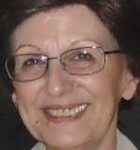
Funzione/Ruolo
Professoressa ordinaria di Chimica Generale dell'Università di Bologna
Percorso professionale
Dopo la Laurea in Chimica presso l'Università di Bologna nel 1971, prosegue la sua formazione prima come borsista, poi contrattista e infine ricercatrice della facoltà di Farmacia dell'università bolognese fino al 1992. Nello stesso anno diventa professoressa associata nella facoltà di Scienze Matematiche, Fisiche e Naturali della stessa università, e viene confermata nuovamente nel 1995. Dal 2005 è professoressa ordinaria di Chimica Generale dell'Università di Bologna.
Risultati scientifici
Dal 1972 al 1991 lavora con un incarico di ricerca presso l'Istituto FRAE (ora ISOF) del CNR di Bologna occupandosi di Chimica delle Radiazioni e, in particolare, dei meccanismi di trasferimento elettronico coinvolti nei sistemi modello per la conversione dell'energia solare in energia chimica. Attualmente si occupa di Fotochimica ed Elettrochimica supramolecolare, dedicandosi in particolare alla progettazione e alla realizzazione di specie formate dall'interazione di due o più molecole in grado di svolgere funzioni utili predeterminate. Gli obiettivi principali della ricerca sono: 1. Ideare e realizzare sistemi chimici nei quali alcuni componenti molecolari possono essere messi in movimento rispetto agli altri mediante opportuni stimoli esterni, che possono essere di tipo luminoso, chimico o elettrochimico. Congegni di questo tipo sono noti come macchine molecolari e sono attualmente di grande interesse scientifico, come chiaramente evidenziato dall'assegnazione del Nobel per la Chimica 2016; 2. Progettare e realizzare sistemi in grado di raccogliere, trasmettere, immagazzinare ed elaborare segnali chimici, luminosi ed elettrochimici. Fra sistemi del genere vi sono antenne, fili, congegni presa/spina, sistemi di tipo "prolunga". I risultati di questa ricerca sono di importanza basilare nei campi delle nanoscienze e delle nanotecnologie, ad esempio per la costruzione di dispositivi in grado di convertire l'energia solare in energia chimica e lo sviluppo di congegni ultraminiaturizzati per l'elaborazione delle informazioni (computer chimici); sono anche di grande interesse per la medicina nell'ambito della quale, ad esempio, la realizzazione di sistemi per il rilascio controllato di farmaci apre nuove aspettative alla terapia dei tumori.
Attività editoriali e pubblicazioni
Margherita Venturi è autrice di due libri, con Vincenzo Balzani: Chimica! Leggere e scrivere il libro della natura (Scienza Express Edizioni, 2012) e Energia, Risorse, Ambiente (Zanichelli, 2014).
È autrice di oltre 250 pubblicazioni quasi tutte su riviste internazionali altamente qualificate, tra cui:
(2015) D’Agostino S, Bergamini G, Ceroni P, Comotti A, Sozzani P, Bassanetti I, Grepioni F, Hernandez TM, Silvi S, Venturi M, Credi A. Photoinduced reversible switching of porosity in molecular crystals based on star-shaped azobenzene tetramers. Nature Chemistry, 7:634-640.
(2015) Ragazzon G, Baroncini M, Silvi S, Venturi M, Credi A. Light-powered autonomous and directional molecular motion of a dissipative self-assembling system. Nature Nanotechnology, 10:70-75.
(2008) Balzani V, Credi A, Venturi M. Photochemical conversion of solar Energy. ChemSusChem, 1:26-58.
(2008) Balzani V, Credi A, Venturi M. Molecular Devices and Machines – Concepts and Perspectives for the Nanoworld. Wiley-VCH: Weinheim, 1-546.
(2006) Balzani V, Clemente-León M, Credi A, Ferrer B, Venturi M, Flood A H, Stoddart J F. Autonomous artificial nanomotor powered by sunlight. Proc. Natl. Acad. Sci. USA, 103:1178-1183.
Riconoscimenti e premi
Nel 2000 ha creato, presso il Dipartimento di Chimica "Giacomo Ciamician", il gruppo Per conoscere la Chimica, formato da docenti, ricercatori, dottorandi e studenti universitari, con lo scopo di promuovere l'immagine della Chimica, disciplina tanto importante quanto incompresa. Sfruttando il fascino della Chimica "in azione", il gruppo ha messo a punto uno spettacolo dal titolo "Suoni, luci, colori ed altri effetti speciali" nel corso del quale, per mezzo di esperimenti spettacolari e coinvolgenti, gli studenti (dalle scuole elementari alle superiori) e i cittadini vengono messi di fronte a un volto nuovo della Chimica, scoprendo così quanto questa disciplina sia importante la nostra vita quotidiana, nonché per lo sviluppo e la comprensione delle altre scienze, dalla Biologia alla Medicina. Nel 2014 riceve la medaglia Gabriello Illuminati "in riconoscimento del contributo dato allo sviluppo delle scienze chimiche con particolare riferimento agli aspetti della didattica come autrice di articoli, manuali didattici, libri universitari e di divulgazione scientifica, coordinatrice e partner di progetti italiani ed europei, organizzatrice di cicli di conferenze e attività di aggiornamento, consulente per mostre/percorsi scientifici, creatrice di gruppi per promuovere l'immagine della Chimica".



